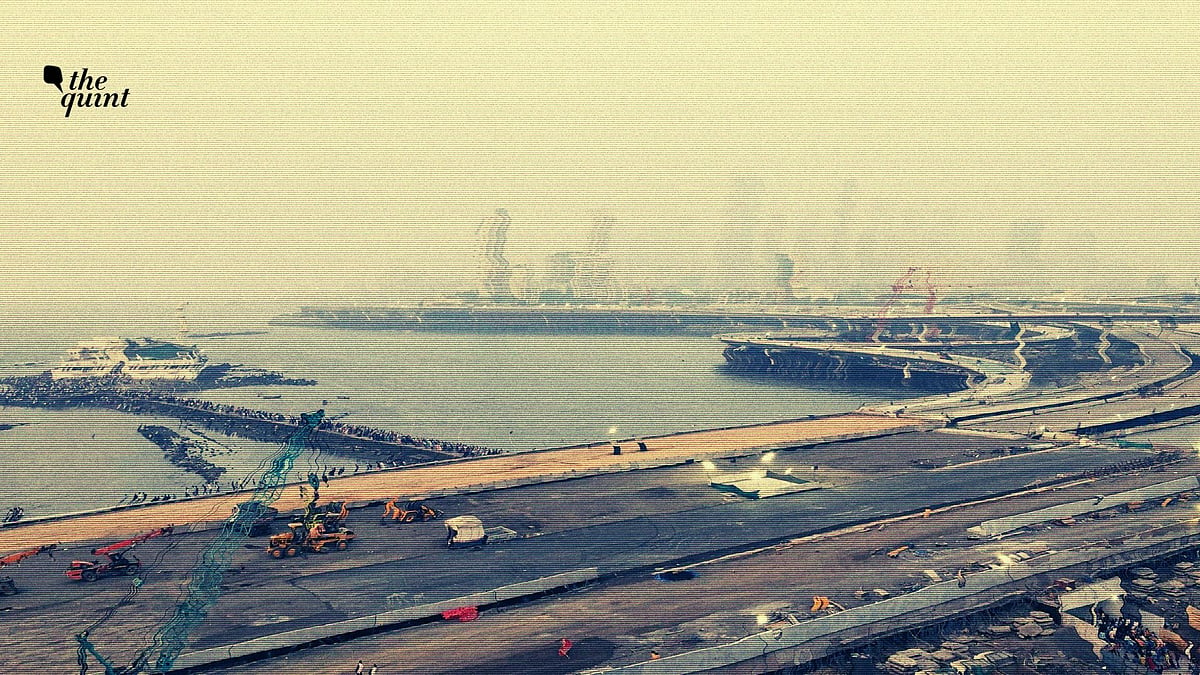
'Cushion Between Sea & City': The Impact Of Cutting 9,000 Mangroves in Mumbai
The BMC's plan to cut 9,000 mangroves for Mumbai Coastal Road has environmentalists warning of serious consequences.

advertisement
Climate crisis is staring us in the face – and we at The Quint want to keep doing our bit in covering these stories. Support us to tell them. Become a member now.
The Brihanmumbai Municipal Corporation (BMC)’s second phase of the Mumbai Coastal Road Project, a 22.48-kilometre corridor connecting Versova to Bhayander, has drawn the ire of Mumbai's environmental activists.
With an estimated cost of around Rs. 20,000 crores, the project includes elevated roads, twin tunnels, and a critical link to the Goregaon-Mulund Link Road. This new route will reportedly ease congestion in Mumbai’s northern suburbs, reduce travel time, relieve the overburdened Dahisar Check Naka, and reduce the traffic load by 30-35%.
While officials say that the elevated alignment minimises land reclamation, cutting through mangrove patches, creeks, and forest zones has rung alarm bells of among environmentalists and local communities, who argue that the ecological cost is far too high.
“This coastal road is going to be very, very devastating for the ecosystem,” Mumbai-based environmental activist Amrita Bhattacharjee told The Quint. “It is literal cement concrete construction that will happen in the creek,” she said.
The BMC, meanwhile, has offered 'alternatives' for aforestation in a bid to make up for the expected environmental and ecological impact of the project, and has invited suggestions from citizens' bodies for the same. But what is the actual expected scale of the impact? And how environmentaly viable are the 'alternatives'? The Quint spoke to various environmentalists and activists to unbderstand.
BMC Offers a Solution, But is it Viable?
Offering a 'solution', the BMC has proposed planting three times the number of mangroves being cut. A 30-acre land parcel in Bhayander has been finalised for this compensatory afforestation, and land patch in Maharashtra's Chandrapur district is also under consideration. Officials said that the idea is to set up mangrove nurseries on leased land parcels and later transplant fully grown saplings to compensate for the lost green cover in specific areas.
Efforts are underway to identify mangrove nurseries across north Mumbai. The forest department is working on assessing whether the land identified is suitable for plantations.
But can afforestation help offset the environmental cost of removing mangroves? Environmentalists argue that replanting efforts often fail, either owing to poor planning or due to lack of long-term monitoring.
“We don’t know how much they have cut or how many plantations they will be doing. It will need a lot of follow-ups; who is going to follow?” questioned environmental activist Harish Pandey.
Ecosystem at Risk?
The mangroves in question are undoubtedly part of one of Maharashtra’s most critical coastal ecosystems, stretching from Mumbai to the Konkan region. Their root systems help stabilise coastlines, prevent erosion, and reduce flood risk during cyclonic activity. Scientific studies have shown that they also act as carbon sinks, reportedly storing up to five times more carbon than tropical forests.
Recent years have shown that even 150 mm or 200 mm of rain has caused flooding in Mumbai as opposed to decades ago. This can be attributed to the loss of wetlands, eventually culminating in even greater flood risks, experts said.
“Many areas will not only get flooded, but with this kind of construction, we don't know what kind of pattern changes will happen in the tidal currents and where land erosion will start,” said Bhattacharjee, expressing her concern over destroyed forests.
The project's fallout goes beyond ecology to include coastal communities. Interference with marine biodiversity and traditional fishing zones equate to the loss of livelihood for the Koli fishing population, experts said. Bhattacharjee further said that in Worli, members of the Koli community have reportedly lost their informal fishing zones due to construction.
Public Suggestions, Limited Influence
The BMC has opened a 30-day window inviting public suggestions and objections on the project’s second phase, inviting citizens to respond before 21 April. However, citizens like Pandey, who have participated in past hearings, doubt the efficacy of such processes. He also shed light on how objections are treated once approvals are secured, often getting reduced to a procedural formality.
Despite legal rights to raise environmental concerns in the face of such projects, the final decisions are usually based on clearances obtained from environmental authorities and courts, leaving little room for course correction.
“Numerous suggestions and objections have been sent by citizens,” Bhattacharjee pointed out. “But finally, we need to go to the court, and many times in the court, the process gets delayed so much that already a huge amount of destruction is done by then.”
With Mumbai already facing floods, heat, and climate-related challenges, many worry the Coastal Road project comes at too high a cost.
“Technology should work in a way that it should not bulldoze the ecosystem. It has to work around the ecosystem,” Bhattacharjee said.
- Access to all paywalled content on site
- Ad-free experience across The Quint
- Early previews of our Special Projects
Published: undefined